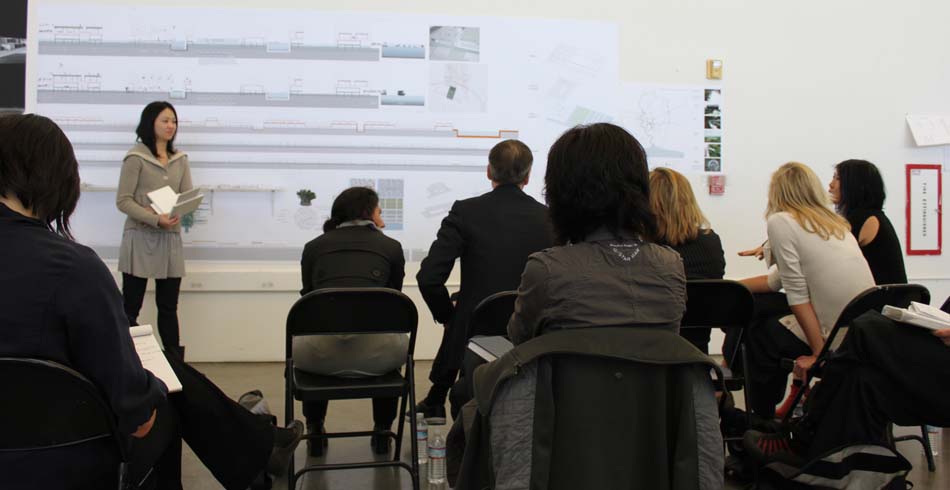What’s the value of architecture school?
The movie begins with ping pong and a chicken. More precisely, it begins with a group of architecture students finishing their final projects late at night—the chicken and ping pong arising naturally from the chaos. The film, follows a group of Indian architecture students in the 1970’s, and is based loosely on novelist Arundhati Roy’s own experiences. There are afros. There is colorful Indian slang. It is a window into another world.
And yet, it is unexpectedly but intensely familiar. My own architecture school experience did not take place in the 1970’s, and occurred on an entirely different continent, and yet is immediately recognizable. Intense conversations, check. Caffeine addiction, check. Petty rivalries, check. And of course, ping pong, check.
This of course, would just be an amusing exercise in reminiscences and shared cultural touchstones if it weren’t for unsettling real-world interjections into this collegiate atmosphere. In Georgetown University’s recent study on the employment trajectories of various typical undergraduate majors, architecture and arts yielded the highest unemployment rates among all college degrees.
More broadly, today’s political and economic environment is less than enamored of the classic liberal arts education, to which architectural education is closely philosophically tied. With an increasing emphasis on global competitiveness and performance, more practical educational programs (think: engineering, IT infrastructure, green technology, medicine) seem critical; philosophy and the arts, less so. Moreover, given the Georgetown study, these criticisms are not without some merit. After all, if you walk out of your final studio with $100,000 of debt and no job, an expertise at ping pong is scant comfort.
So, what is the value of architecture school? What do you get for the sleepless hours, the painful presentations, the impenetrable jargon? And more importantly, what do clients get that is valuable and unique?
Things you get (from architecture school):
Abundant practice in public speaking (even under conditions of stress and exhaustion)
Basic technical knowledge
Comfort with the latest technological tools
Cocktail party conversational starters—or enders—about famous architects
However, I think the most fundamental part of architectural education is less tangible. The studio system teaches students to take big ideas and to manifest them in concrete, particular, small(er) scale ways. The student takes a Big Question—the future of education, the experience of a city, income inequality, social justice—and attempts to respond using what is, overall, a fairly limited toolkit of material and geometry. Inversely, successful projects (and successful architecture) operate at both scales: a well designed building/city/detail can suggest something larger and intangible about the world around it. This is a difficult and thorny process: hence all the late nights, and frustrating critiques.
However, this skill is valuable. In fact, this sort of large-scale/small-scale thinking is becoming more and more common at the top-ranked business schools—Harvard, University of Chicago, UC Berkeley. And yet, business school graduates less frequently come away with only debt and ping pong. If this type of thinking is a fundamental part of architectural education, and is otherwise clearly valued in the current economic market, why are architectural job prospects and financial compensation so distinctly dim?
In part, due to what you DON’T get (from architecture school):
Business training of any sort
Outside opinions
Architecture schools are highly insular—they are regulated by NCARB, and their faculty is largely made up of other architects and planners. This means, that though teaching critical thinking and design strategies with universal value, most studios consider projects unsuccessful if it’s not, in the end, a building/landscape/city/installation. This does a disservice to the incredible creativity that thrives within architecture schools—and it does a disservice to the profession that these schools serve. It’s too bad that the innovation generating new façade languages cannot also be used to generate new approaches to real estate development, or different ways to articulate planning directives, or even new business models for architectural practices. Architecture schools should recognize the broader value of their existing pedagogy; ultimately, both architectural practice and education will be stronger.
The craft entrepreneur may provide lessons for architects. As recently discussed in the NY Times, the makers of artisanal pickles and gourmet beer are boosting the new American economy. These businesses work economically by sidestepping the trap of cheapness. Most notably, they offer creativity and quality – two things that an architectural education prepares us to offer – so people pay more for their products. By articulating the value of our own education, we position ourselves to better articulate the value of our profession.
Leah Marthinsen, LEED AP BD+C
Designer

